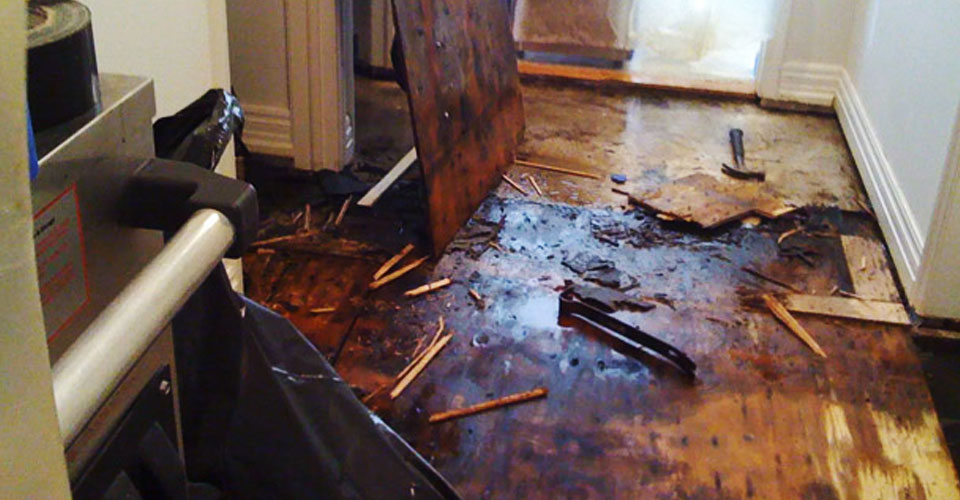Do's & Don'ts of Water Restoration.
Do's & Don'ts of Water Restoration.
Blog Article
Everyone has got their private rationale about What You Can Do At Home To Prevent Fire And Water Damage.

Water offers life, water intrusion on parts where it's not intended to be can result in damage. Houses with water damage scent old and moldy.
Water can come from numerous resources such as typhoons, floods, burst pipes, leakages, and also sewage system issues. In case you experience water damage, it would be great to understand some safety and security preventative measures. Here are a few guidelines on exactly how to take care of water damages.
Do Prioritize Residence Insurance Coverage
Water damage from flood because of heavy winds is seasonal. Nevertheless, you can likewise experience an unexpected flooding when a damaged pipeline instantly breaks right into your home. It would certainly be best to have house insurance coverage that covers both disasters such as natural disasters, and emergencies like broken plumbing.
Do Not Neglect to Switch Off Energies
This cuts off power to your entire house, preventing electric shocks when water comes in as it is a conductor. Don't neglect to turn off the major water line valve.
Do Keep Proactive as well as Heed Climate Informs
Storm floods can be very uncertain. If there is a history of flooding in your area, stay prepared and also proactive. Pay attention to evacuation warnings if you live near a creek, lake, or river . Take out belongings from the very beginning and cellar, after that placed them on the highest possible degree. Doing so reduces prospective residential or commercial property damages.
Don't Overlook the Roofing System
You can prevent rain damage if there are no holes and also leakages in your roofing. This will avoid water from flowing down your wall surfaces and also saturating your ceiling.
Do Focus On Small Leaks
A ruptured pipe does not occur over night. You may see bubbling paint, peeling off wallpaper, water streaks, water discolorations, or leaking sounds behind the wall surfaces. Have your plumbing repaired before it results in massive damages.
Do Not Panic in Case of a Burst Pipeline
Keeping your clearheadedness is important in a time of situation. Stressing will just intensify the trouble because it will certainly stifle you from acting quick. Timing is essential when it comes to water damages. The longer you wait, the more damage you can anticipate. Therefore, if a pipe bursts in your house, promptly shut down your main water shutoff to remove the source. Disconnect all electric outlets in the area or turn off the circuit breaker for that component of the house. Ultimately, call a trusted water damages reconstruction specialist for help.
Water provides life, water invasion on components where it's not intended to be can result in damages. Residences with water damages scent musty and old.
Water damage from flooding charges to hefty winds is seasonal. You might see gurgling paint, peeling off wallpaper, water touches, water discolorations, or leaking noises behind the walls. When it comes to water damage, timing is essential.
Some Do's & Don't When Dealing with a Water Damage
DO:
Make sure the water source has been eliminated. Contact a plumber if needed. Turn off circuit breakers supplying electricity to wet areas and unplug any electronics that are on wet carpet or surfaces Remove small furniture items Remove as much excess water as possible by mopping or blotting; Use WHITE towels to blot wet carpeting Wipe water from wooden furniture after removing anything on it Remove and prop up wet upholstery cushions for even drying (check for any bleeding) Pin up curtains or furniture skirts if needed Place aluminum foil, saucers or wood blocks between furniture legs and wet carpet Turn on air conditioning for maximum drying in winter and open windows in the summer Open any drawers and cabinets affected for complete drying but do not force them open Remove any valuable art objects or paintings to a safe, dry place Open any suitcases or luggage that may have been affected to dry, preferably in sunlight Hang any fur or leather goods to dry at room temperature Punch small holes in sagging ceilings to relieve trapped water (don't forget to place pans beneath!); however, if the ceiling is sagging extremely low, stay out of the room and we'll take care of it DO NOT:
Leave wet fabrics in place; dry them as soon as possible Leave books, magazines or any other colored items on wet carpets or floor Use your household vacuum to remove water Use TV's or other electronics/appliances while standing on wet carpets or floors; especially not on wet concrete floors Turn on ceiling fixtures if the ceiling is wet Turn your heat up, unless instructed otherwise

I am just very taken with Safety Tips To Prevent Fire And Water Damage and I really hope you enjoyed reading the new blog entry. Sharing is caring. Helping others is fun. Thanks a bunch for your time. Visit again soon.
Report this page